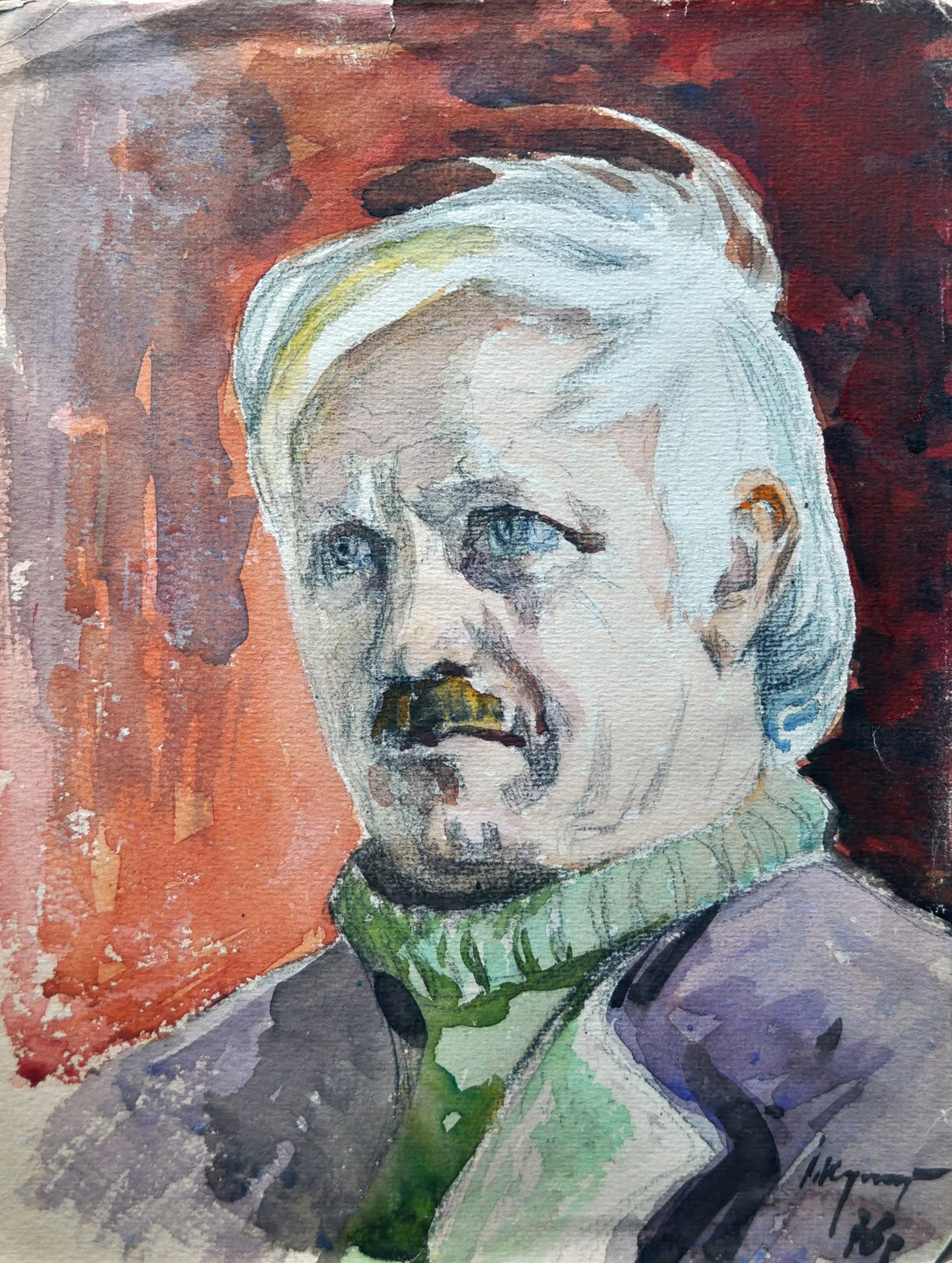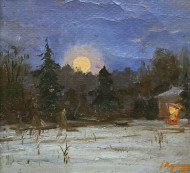- Home
- Kulik Ivan - artist, master of the Ukrainian genre
Kulik Ivan - artist, master of the Ukrainian genre

Ivan Kulik (1923–1995) — a prominent Ukrainian artist whose work was deeply rooted in his native land and its history. He is renowned for his thematic paintings dedicated to Ukrainian village life, as well as his masterful landscapes, portraits, and still lifes. Kulik's artistic legacy includes over 500 works, a significant portion of which he generously donated to his home village and various museums.
Ivan Kulik's Life and Education
Born on April 30, 1923, in the village of Moryntsi, in the Cherkasy region of Ukraine, Ivan Kulik grew up in a large, impoverished family. From a young age, he was immersed in the works of Taras Shevchenko, a revered Ukrainian poet. In 1941, after graduating from Moryntsi Secondary School, he enrolled in the Kyiv Pedagogical Institute. However, his studies were interrupted by World War II. During the war, Kulik was forcibly sent to Germany for compulsory labor, working in the mines of Alsace-Lorraine.
Upon his return to Ukraine in 1945, Kulik became the head of the House of Culture in Moryntsi. His passion for art led him to the Kyiv College of Applied Arts (1946–1948), where he studied fresco painting, and subsequently to the Kyiv Art Institute (1948–1955). There, he trained under esteemed masters such as Tetiana Yablonska, Karp Trokhymenko, and Mykhailo Ivanov. Kulik's diploma work, "Taras Shevchenko's Childhood Years," became an iconic piece.
Creative Work and Recognition
After completing his education, Ivan Kulik worked at the Artists' Society in Stanislav (now Ivano-Frankivsk), and from 1965, he settled in Cherkasy. He was actively involved in community work, participating in local history expeditions and collecting ethnographic materials. With his involvement, an ethnographic museum was established in his home village of Moryntsi.
Ivan Kulik became a member of the Union of Soviet Artists of Ukraine in 1962. However, in 1973, he was unfairly expelled under accusations of "bourgeois Ukrainian nationalism." This period presented a severe challenge for the artist, but he found the strength to continue creating, especially focusing on landscapes. His reinstatement into the Union of Artists occurred only in 1988.
Key Works and Exhibitions
Ivan Kulik's art encompassed a wide range of themes, but the Ukrainian village, its history, daily life, and people held a central place in his work.
The artist actively participated in republican exhibitions starting in 1958. His solo exhibitions were held in Moryntsi (1961, 1964), Ivano-Frankivsk (1963), Cherkasy (1966, 1969, 1972, 1989, 1998–1999), Zvenyhorodka and Shpola (1967), Uman (1988), and Kyiv (1995).
Legacy
Ivan Kulik was an exceptionally generous individual. In 1967, he donated 100 paintings to his native village of Moryntsi. Additionally, as per his will, his wife, Luiza Makarivna, transferred another 50 works to the Shevchenko School of Arts.
Ivan Kulik's works are preserved in the Cherkasy Regional Museum of Local Lore (which has maintained a permanent exhibition of his works since 1996), the Vasyl Symonenko Literary Memorial Museum in Cherkasy, as well as in private collections and museums in Germany, Canada, and the United States. Since 1999, the Cherkasy City House of Culture has borne Ivan Kulyk's name, honoring the memory of this remarkable artist.
Ivan Kulik passed away on April 7, 1995, in Cherkasy, leaving behind a significant contribution to Ukrainian art. His works serve as a valuable resource for studying Ukrainian culture and history.
- 30
- 60
- 90







